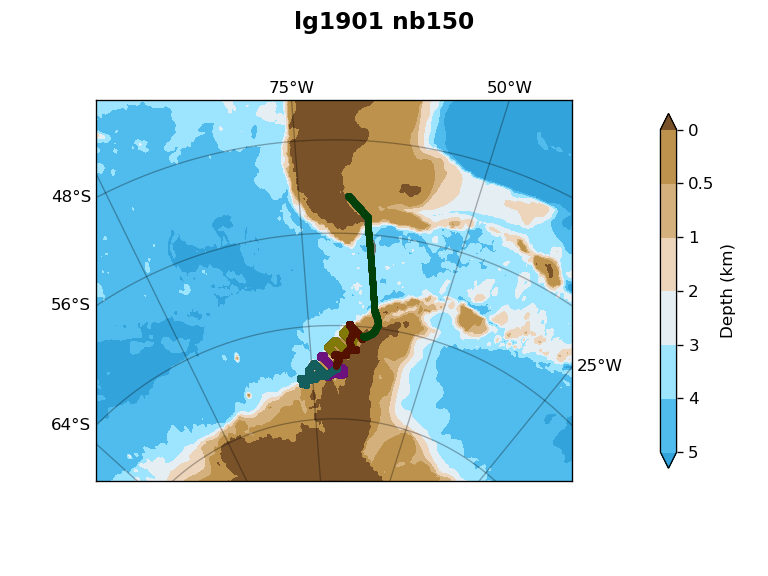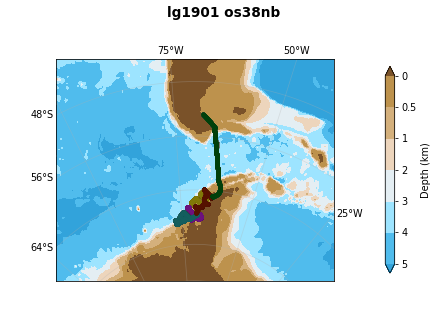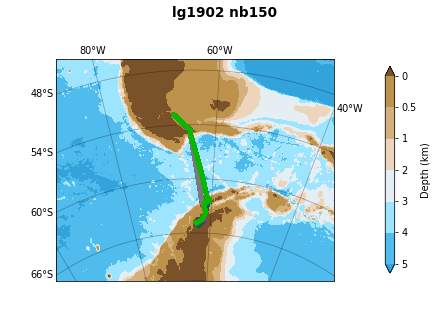
Long-Term Ecological Research (LTER) on the Antarctic Marine Ecosystem : To document/understand the phenology and variability in sea ice dynamics, primary production, zooplankton ecology, Adelie penguin demography, microbial and biogeochemical processes in the Antarctic marine ecosystem.
Jan 2019 - Feb 2019

Long-Term Ecological Research (LTER) on the Antarctic Marine Ecosystem : To document/understand the phenology and variability in sea ice dynamics, primary production, zooplankton ecology, Adelie penguin demography, microbial and biogeochemical processes in the Antarctic marine ecosystem.
Jan 2019 - Feb 2019

To reconstruct the record of Quaternary sea-level changes within the South Shetland Islands To use a suite of new technological tools to measure the underwater behavior of the whales and better understand how they exploit the sea-ice habitat. The objectives of this work are 1) to quantify and understand interactions between krill, krill predators (e.g., penguins and seals), and the Antarctic krill fishery; 2) to estimate krill flux through and standing biomass in areas where krill, predators, and the fishery overlap in space and time; and 3) to identify sustainable harvest strategies for the krill fishery.
Feb 2019 - Mar 2019

To reconstruct the record of Quaternary sea-level changes within the South Shetland Islands To use a suite of new technological tools to measure the underwater behavior of the whales and better understand how they exploit the sea-ice habitat. The objectives of this work are 1) to quantify and understand interactions between krill, krill predators (e.g., penguins and seals), and the Antarctic krill fishery; 2) to estimate krill flux through and standing biomass in areas where krill, predators, and the fishery overlap in space and time; and 3) to identify sustainable harvest strategies for the krill fishery.
Feb 2019 - Mar 2019

Palmer Station Turnover
Mar 2019 - Apr 2019

Palmer Station Turnover
Mar 2019 - Apr 2019

Investigate the ability of the leopard seal, an apex predator, to cope with a changing environment using two complementary research themes that integrates cells to ecosystems. To quantiatively document macroalgal communities at multiple sites between Anvers and Adelaide islands using a combination of diving, video surveys, and algal collections.
Apr 2019 - May 2019

Investigate the ability of the leopard seal, an apex predator, to cope with a changing environment using two complementary research themes that integrates cells to ecosystems. To quantiatively document macroalgal communities at multiple sites between Anvers and Adelaide islands using a combination of diving, video surveys, and algal collections.
Apr 2019 - May 2019

XBT Palmer Station Opening
Oct 2019

XBT Palmer Station Opening
Oct 2019

Palmer Science Movements
Oct 2019 - Nov 2019

Palmer Science Movements
Oct 2019 - Nov 2019

This project has two goals. The first is to investigate the responses of Antarctic krill Euphasia superba to flow and chemical stimuli indicating food and predation risk, the interaction of these cues, and how krill responses to these cues depend on the photic environment. This project will will determine threshold responses, the ability of krill to orient to horizontal and vertical flows, whether chemical cues polarize responses to flow and whether this differs with attractive vs. aversive cues, and how these responses are affected by light intensity. (XBT)
Nov 2019

Nov 2019

The objectives of this work are 1) to quantify and understand interactions between krill, krill predators (e.g., penguins and seals), and the Antarctic krill fishery; 2) to estimate krill flux through and standing biomass in areas where krill, predators, and the fishery overlap in space and time; and 3) to identify sustainable harvest strategies for the krill fishery The first is to investigate the responses of Antarctic krill Euphasia superba to flow and chemical stimuli indicating food and predation risk, the interaction of these ues, and how krill responses to these cues depend on the photic environment. This project will will determine threshold responses, the ability of krill to orient to horizontal and vertical flows, whether chemical cues polarize responses to flow and whether this differs with attractive vs. aversive cues, and how these responses are affected by light intensity. To fulfill NOAA's mandate of providing scientific advice that supports United States interests related to resource management by the Commission for the Conservation of Antarctic Marine Living Resources (CCAMLR)
Dec 2019

The objectives of this work are 1) to quantify and understand interactions between krill, krill predators (e.g., penguins and seals), and the Antarctic krill fishery; 2) to estimate krill flux through and standing biomass in areas where krill, predators, and the fishery overlap in space and time; and 3) to identify sustainable harvest strategies for the krill fishery The first is to investigate the responses of Antarctic krill Euphasia superba to flow and chemical stimuli indicating food and predation risk, the interaction of these ues, and how krill responses to these cues depend on the photic environment. This project will will determine threshold responses, the ability of krill to orient to horizontal and vertical flows, whether chemical cues polarize responses to flow and whether this differs with attractive vs. aversive cues, and how these responses are affected by light intensity. To fulfill NOAA's mandate of providing scientific advice that supports United States interests related to resource management by the Commission for the Conservation of Antarctic Marine Living Resources (CCAMLR)
Dec 2019